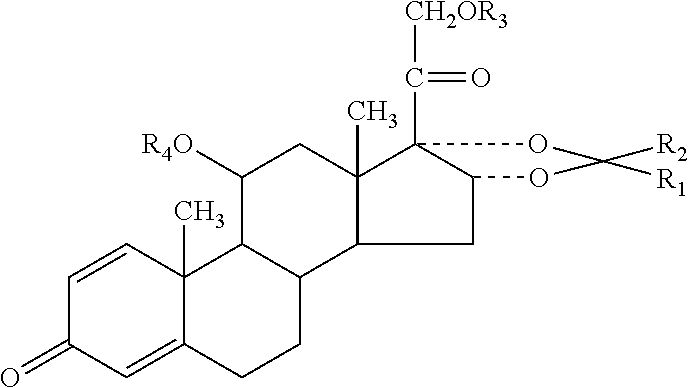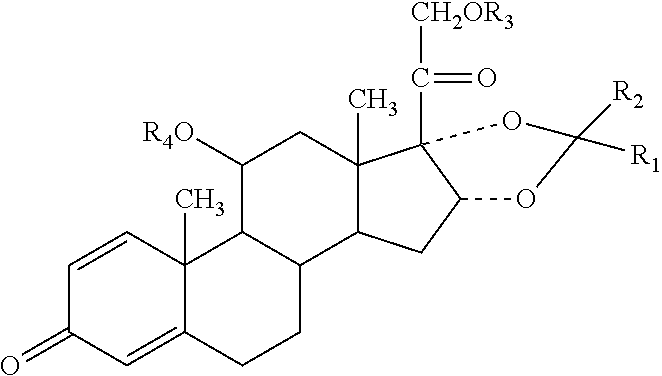Antifungal formulations
a technology of formulations and antifungals, applied in the field oftopical formulations, can solve the problems of undesirable side effects, no topical dermatologic preparation that is suitable for almost all skin types, and inability to use fluorinated and/or potent steroids for topical treatment for extended periods of time, and achieve the effect of sacrificing efficacy
- Summary
- Abstract
- Description
- Claims
- Application Information
AI Technical Summary
Benefits of technology
Problems solved by technology
Method used
Image
Examples
Embodiment Construction
I. Antifungal Formulation
[0011]Antifungal compositions for treating fungal infections or mycological illnesses include one or more antifungal agents as well as one or more anti-inflammatory agents. The composition also contains excipients and a pharmaceutical carrier. The useful steroid agents cause reduced side effects such as skin atrophy, perianal ulcers, striae, and skin pigmentary changes.
[0012]A. Antifungal Agents
[0013]A large number of antifungal agents are known in the art. Generally, these can be generally classified into two broad categories, polyene type antifungal agents and azole type antifungal agents. Exemplary polyene type antifungal agents are, for example, Amphoterican B, Nystatin, Flucytosin, and Natamycin. Exemplary azole type antifungal agents include, for example, Ketoconazole, Econoazole, Miconazole, Itraconazole, Fluconazole, Clotrimazole, Griseofulvin, Oxiconazole, Terconazole, Tioconazole, Clotrimazole, and Silver Sulfadiazine. Other representative antifung...
PUM
| Property | Measurement | Unit |
|---|---|---|
| concentration | aaaaa | aaaaa |
| pH | aaaaa | aaaaa |
| time | aaaaa | aaaaa |
Abstract
Description
Claims
Application Information
 Login to View More
Login to View More - R&D
- Intellectual Property
- Life Sciences
- Materials
- Tech Scout
- Unparalleled Data Quality
- Higher Quality Content
- 60% Fewer Hallucinations
Browse by: Latest US Patents, China's latest patents, Technical Efficacy Thesaurus, Application Domain, Technology Topic, Popular Technical Reports.
© 2025 PatSnap. All rights reserved.Legal|Privacy policy|Modern Slavery Act Transparency Statement|Sitemap|About US| Contact US: help@patsnap.com



